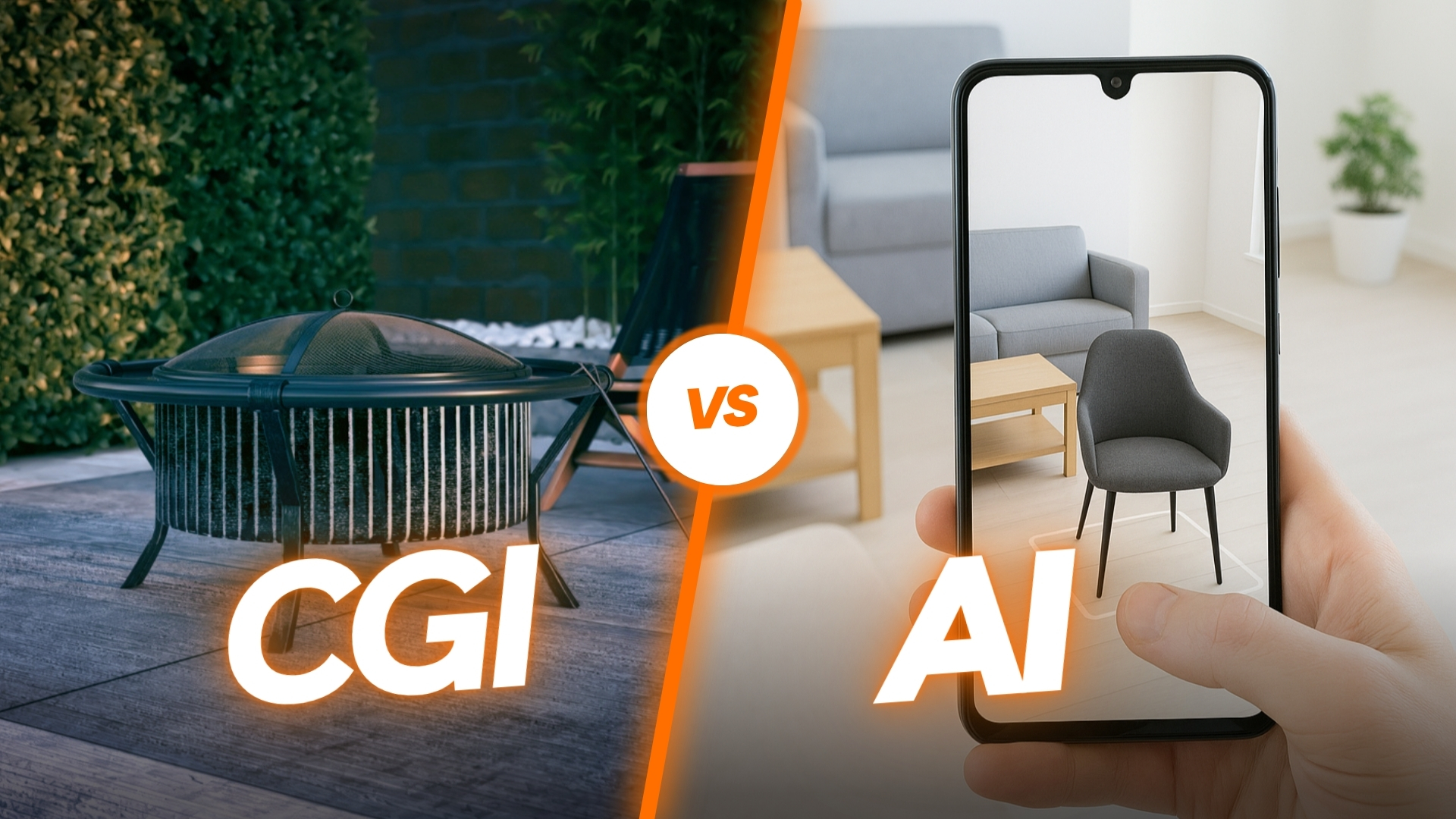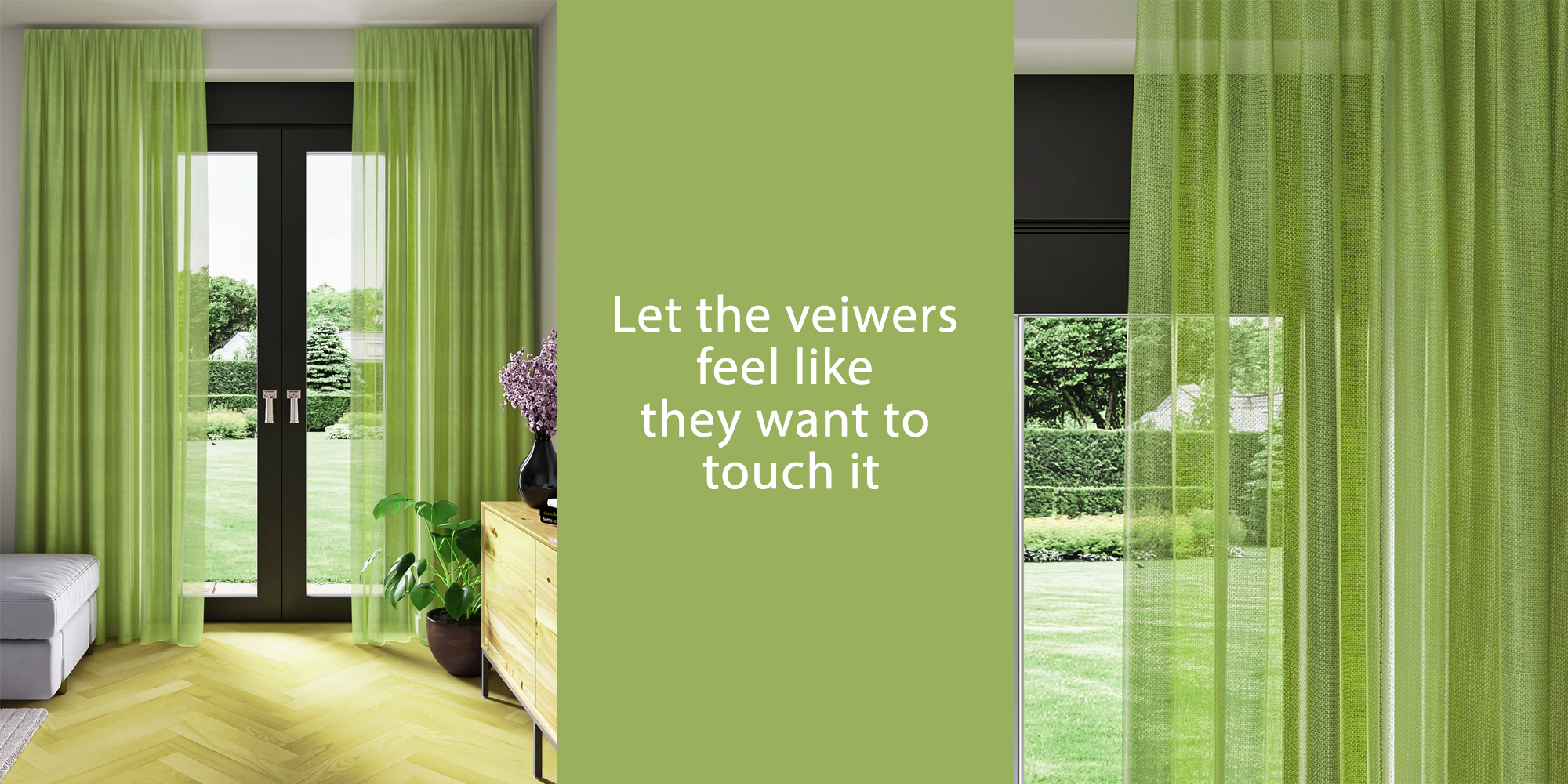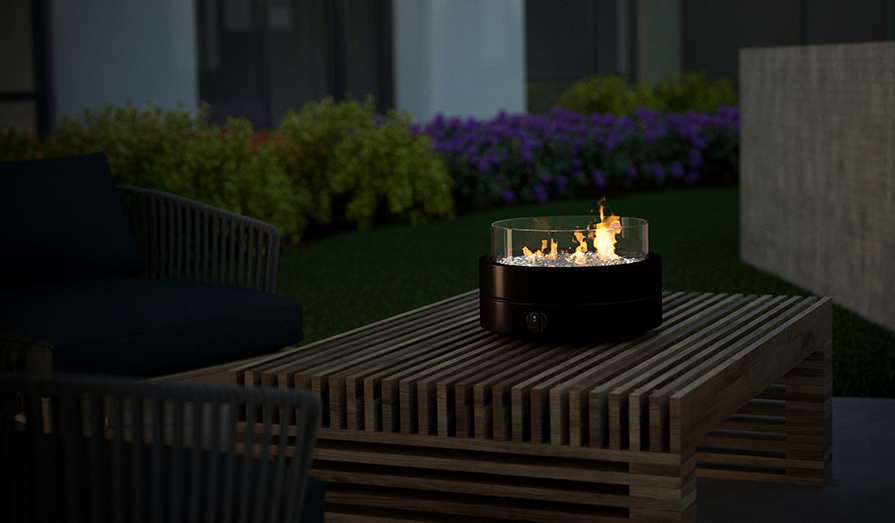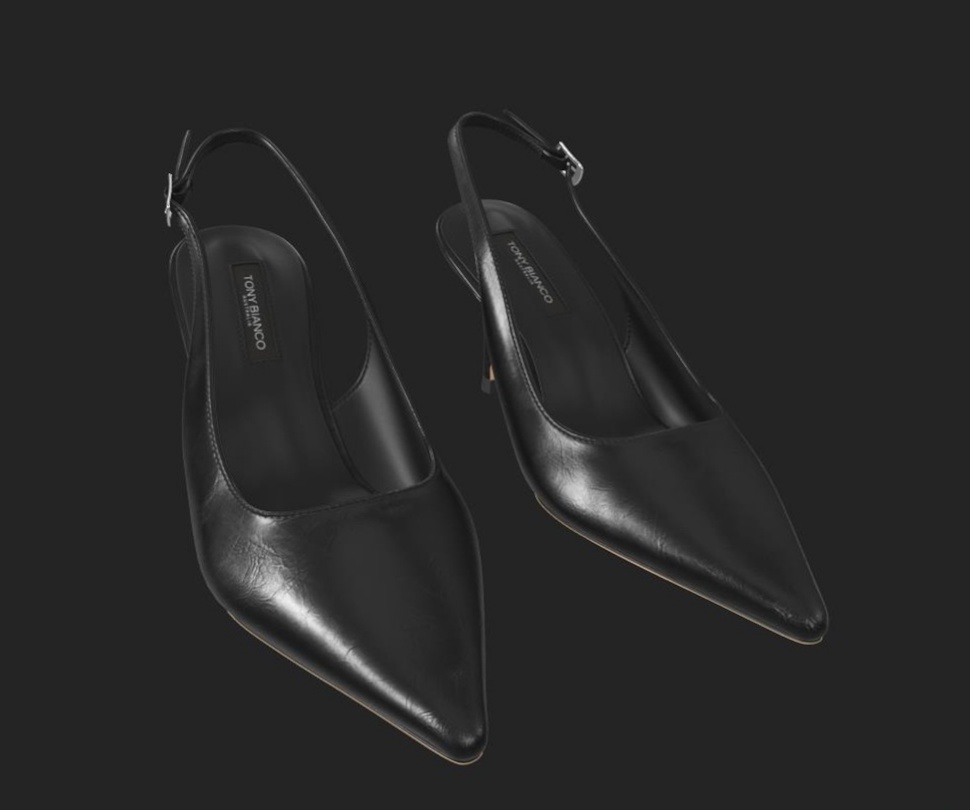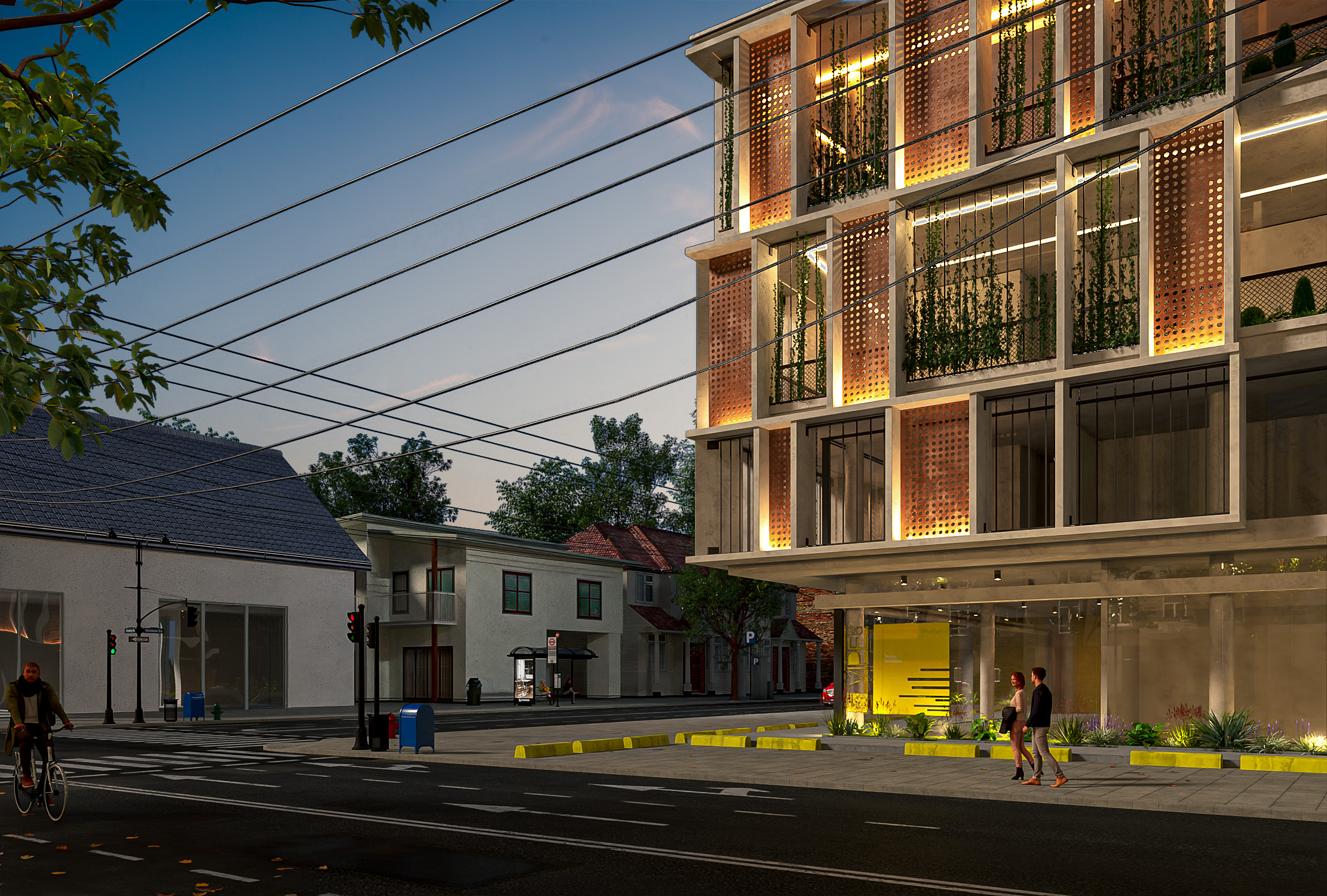If you run a design firm, architecture studio, or product company, you already know the pain of trying to keep up with 3D modeling demands. Maybe you’re juggling multiple client deadlines. Maybe your team doesn’t have specialized expertise for that complex interior or furniture rendering. Or maybe your overheads are simply too high.
That’s exactly where outsourcing 3D modeling can help. More companies than ever are choosing to outsource 3D modeling — and it’s not hard to see why. You gain access to experienced professionals without the burden of full-time salaries, you scale faster, and you can focus on your core business. Let’s explore how 3D modeling outsourcing can solve these challenges, what to look for in a partner, and how to make sure you get real value every time.
Understanding 3D Modeling Outsourcing
Outsourcing 3D modeling means hiring specialized teams or studios outside your company to create precise, high-quality 3D assets — everything from product designs to full-scale architectural visualizations. Instead of carrying the cost of full-time modelers or expensive software, you leverage an experienced partner with proven workflows, tools, and talent.
This is especially effective for businesses that need architectural 3D modeling, 3D furniture modeling, or 3D product modeling for marketing materials and e-commerce purposes.
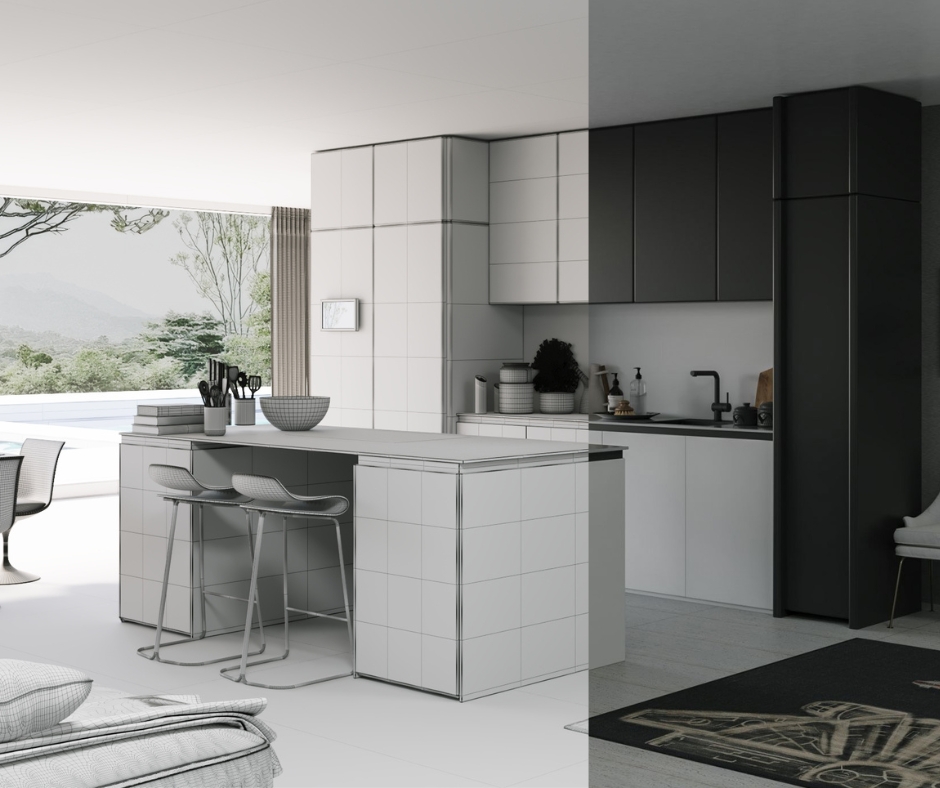
Key Benefits of Outsourcing 3D Modeling
1. Cost Efficiency That Saves Time and Money
Outsourcing your 3D modeling allows you to pay only for what you need, avoiding the cost of hiring in-house teams, software, and equipment.
2. Access to Specialized 3D Modeling Expertise
Tap into experienced professionals who can tackle everything from intricate architecture renders to photorealistic furniture and product models.
3. Faster Turnaround Times to Meet Deadlines
Professional 3D studios work across time zones and have proven processes to deliver high-quality assets faster, so you stay on schedule.
4. Scalability and Flexibility for Every Project
Outsourcing lets you scale up or down easily as your project requirements change — no HR headaches or long-term commitments.
5. Focus on Core Competencies and Business Growth
With a dedicated 3D team handling the technical work, your in-house team can concentrate on design, strategy, and client relationships
Industries That Benefit from 3D Modeling Outsourcing
Architecture and Real Estate
For architects, outsource architectural 3D modeling simplifies the process of creating photorealistic visualizations and walkthroughs. This enhances client presentations and marketing materials while keeping costs in check.
Product Design and Manufacturing
Product brands can quickly outsource 3D product modeling to produce marketing renders, interactive 3D product showcases, or AR/VR-ready assets. This helps them go to market faster and stand out against competitors.
Interior and Furniture Design
Interior designers and furniture companies rely on detailed visualizations to sell their ideas. Outsourcing 3D furniture modeling services allows them to create accurate representations of custom pieces, entire room layouts, and decor, making it easier for clients to visualize and approve.
Entertainment and Gaming
Animation studios, game developers, and VFX teams also benefit by outsourcing their assets. Specialists who do 3D modeling every day produce game-ready characters and assets faster and at a higher quality than an overextended in-house team.
Healthcare and Medical
Medical device companies and healthcare marketers often need specialized 3D models for educational and promotional materials. External teams with healthcare-specific experience can produce accurate, compliant assets faster.
Common Challenges and Risks — and How to Solve Them
Communication Barriers
Work with a partner who’s experienced in client communication. They’ll have clear project management tools, scheduled check-ins, and a process that keeps everyone on the same page.
Quality Control Concerns
Check their portfolio. Speak to their past clients. Test them with a small pilot project before fully committing. Serious studios will have proven quality assurance processes.
Data Security and Intellectual Property
Always work under an NDA and make sure there are clear ownership terms. The best studios follow strict confidentiality protocols and have data security measures like encrypted file sharing.
Loss of Control
You don’t have to hand over control completely. The most successful outsourcing relationships use regular milestones, visual reviews, and active client feedback to keep the process collaborative.
Best Practices for Successful 3D Modeling Outsourcing
1. Clear Project Briefs
Provide clear project scopes, references, and style guides. The more specific you are at the outset, the smoother the entire process will be.
2. Set Timelines and Milestones
Establish a realistic schedule for drafts, reviews, and final delivery. Include buffer time for iterations.
3. Maintain Active Communication
Use tools like Slack, email, and video calls to keep communication open and responsive. Encourage quick feedback loops to minimize delays.
4. Partner with the Right Studio
Evaluate studios based on their portfolio, industry expertise, reviews, and process. Consider starting with a trial project to confirm they fit your standards.
5. Implement Quality Checks
Review drafts carefully and give constructive feedback at each stage. This keeps the final product aligned with your vision.
Outsource 3D Modeling Workflow: How 3D Artists Bring Multiple Product Variants to Life
If you’re a furniture manufacturer or product designer looking to showcase multiple variations, outsourcing this process is especially effective. You can read our comprehensive blog on the Benefits of outsourcing 3D Furniture Modeling Services.
Specialized studios use proven workflows to produce high-quality renders at scale. Here’s what that process looks like in practice:
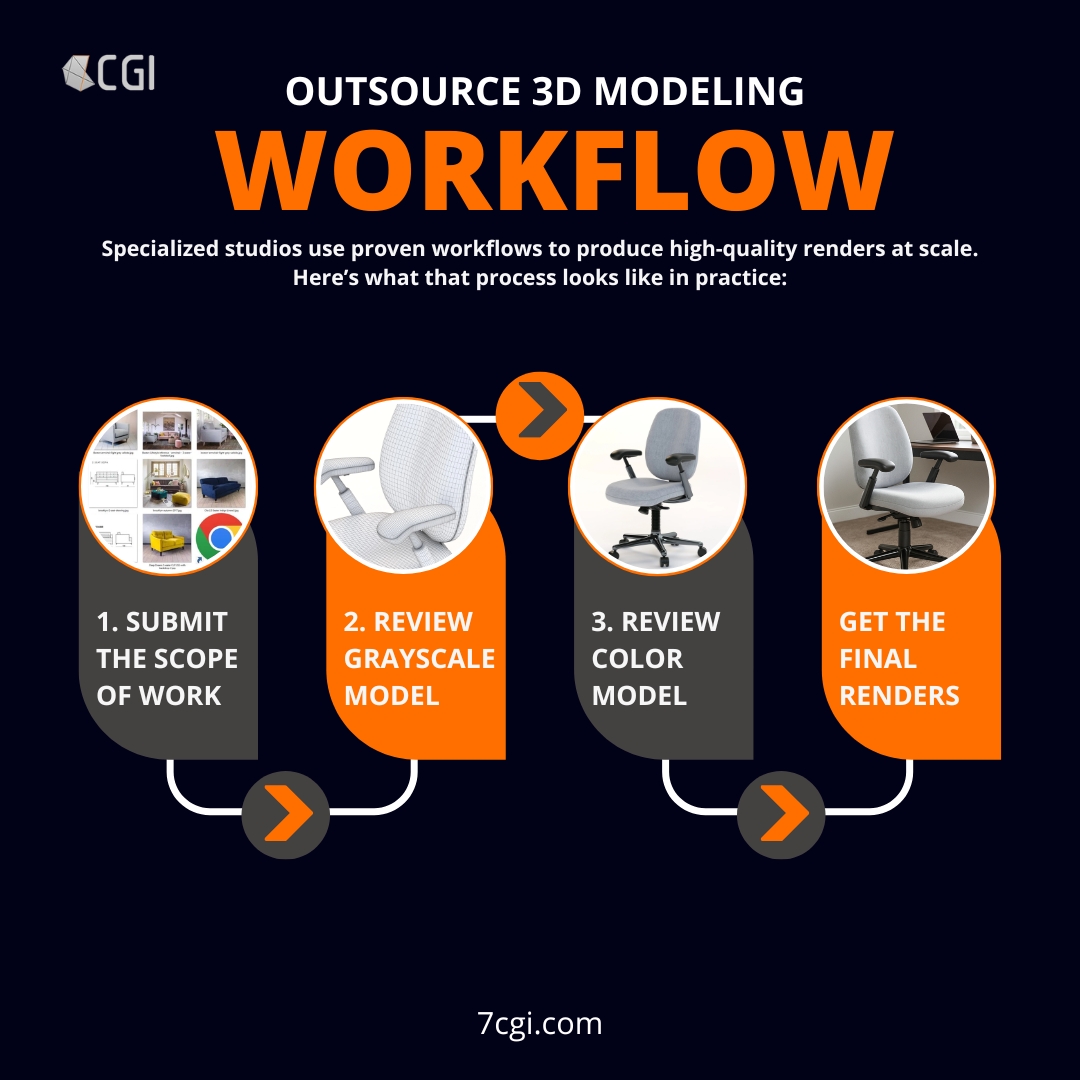
1. Submit the Scope of Work and References
You’ll send a brief that includes a task description, technical drawings with measurements, material photos, and any existing product images. The 3D team will review these references carefully before modeling.
2. Review Grayscale Model
Next, you’ll receive a grayscale render without colors or textures. This lets you check geometry, dimensions, and proportions early on, so there are no surprises later.
3. Review Color Model
Once the shape is approved, the team will add colors, materials, and textures. You’ll check these renders closely to make sure they match your physical samples.
4. Get the Final Renders
After your sign-off, the team will produce photorealistic renders with polished lighting, contrast, and color balance. These high-quality images are ready for use on your website, in catalogs, ads, or social campaigns.
5. Store the 3D Model for Future Use
Your model is archived for easy access when you want new variations — new materials, angles, or lifestyle renders. This means you can scale your marketing assets quickly as new products launch without repeating the modeling process.
By following this process, you simplify the creation of multiple design options and ensure that your product is shown in its best light every time.
Key Cost Factors and Pricing Models
Key Cost Determinants
Complexity, level of detail, and number of revisions all impact pricing.
More intricate models, like outsource 3D architectural modeling or hyper-realistic product renders, typically cost more than simple shapes.
Common Pricing Models
- Hourly Rates: Pay only for the time spent on the project.
- Fixed Project Rates: A one-time cost for a clearly defined scope.
- Per-Asset Pricing: A per-model price that scales up or down with volume.
Outsourcing vs. In-House
Handling 3D modeling in-house can get expensive. Beyond salaries, you have to cover recruiting, benefits, software, hardware, and workspace — all for a team that may not always be busy.
When you outsource 3D modeling, you pay only for what you need. You get skilled artists with their own tools, avoid fixed overheads, and keep your team focused on your main business.
Future Trends in 3D Modeling Outsourcing
AI and Automation
AI tools are becoming increasingly integrated into 3D modeling workflows, handling repetitive tasks like retopology and texture generation faster.
Virtual Reality and Augmented Reality
Demand is soaring for VR- and AR-ready 3D assets as more companies embrace immersive marketing and interactive product presentations.
Cloud-Based Collaboration
Cloud tools streamline global teamwork, allowing real-time collaboration and file sharing between you and your 3D partner.
Market Growth and Specialization
Expect more studios specializing in niche areas like outsourcing 3D furniture modeling services, architectural visualizations, or medical training simulations.
Let’s Sum It Up
Outsourcing 3D modeling is a proven strategy for scaling up, cutting costs, and improving the quality of your visual content. If you outsource 3D modeling, the right partner can make a dramatic difference to your bottom line and your clients’ satisfaction.
Want a complete guide on outsourcing 3D rendering projects — including 3D modeling and everything you need to know?
When you’re ready to explore what’s possible, take a look at our 3D Modeling and Rendering Services at 7CGI and see how we help companies like yours streamline production, boost quality, and grow faster.



